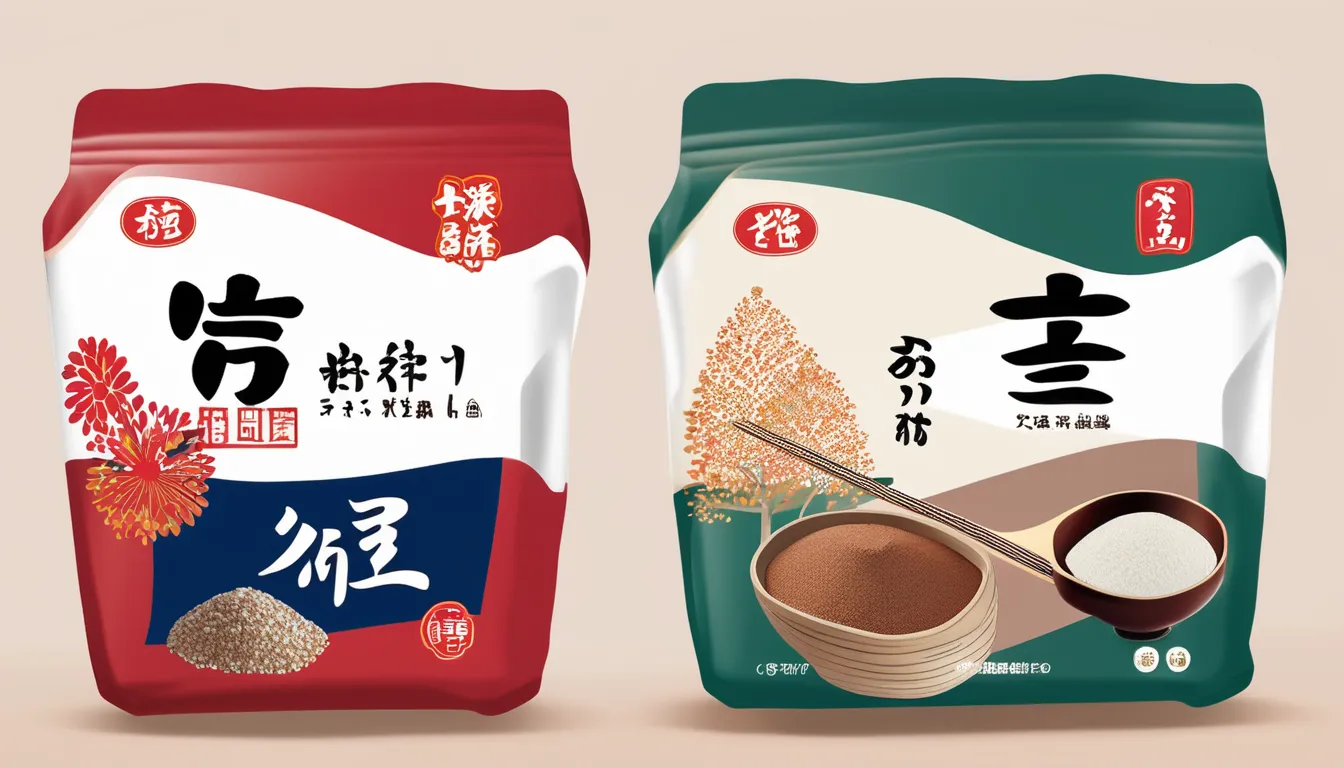Looking to add a nutritious twist to your cooking repertoire? Buckwheat flour has you covered with its versatility in the kitchen. From fluffy pancakes to crispy coatings for fried foods, this ingredient offers a unique flavor and texture that will keep you coming back for more. So, are you ready to elevate your dishes and explore the top five uses for buckwheat flour in the kitchen?
Fluffy Pancakes
If you’re looking for a delightful breakfast treat, consider making fluffy pancakes using buckwheat flour. Buckwheat flour, with its nutty flavor and hearty texture, adds a unique twist to the classic pancake recipe.
To start, whisk together buckwheat flour, baking powder, salt, and a touch of sugar in a bowl. In a separate bowl, mix buttermilk, eggs, and melted butter before combining with the dry ingredients. Be sure not to overmix the batter to keep those pancakes light and airy.
Heat a skillet over medium heat and lightly grease it with butter or oil. Pour a ladleful of batter onto the skillet for each pancake and cook until bubbles form on the surface. Flip and cook until golden brown.
Serve your buckwheat pancakes warm with maple syrup, fresh berries, or a dollop of yogurt for a delicious and wholesome breakfast.
Crispy Coatings for Fried Foods
For achieving a satisfying crunch on your favorite fried foods, consider using buckwheat flour as a key ingredient in creating crispy coatings. Buckwheat flour’s unique nutty flavor and fine texture make it an excellent choice for coating foods before frying.
To start, mix buckwheat flour with your desired seasonings like salt, pepper, garlic powder, or paprika in a bowl. Dredge your protein or vegetables in this seasoned buckwheat flour mixture, ensuring an even coating. The flour helps create a crunchy exterior when fried, adding a delightful contrast to the tender interior of your dish.
Whether you’re coating chicken tenders, fish fillets, onion rings, or even slices of zucchini, buckwheat flour can elevate the texture and taste of your fried creations. The flour’s natural binding properties also help the coating adhere well to the food, ensuring a crispy finish.
Give buckwheat flour a try for your next frying adventure and enjoy the deliciously crispy results it brings to your table.
Gluten-Free Baking
Consider expanding your culinary horizons by exploring the world of gluten-free baking with buckwheat flour. This nutritious and earthy flour is an excellent alternative for those avoiding gluten. Buckwheat flour adds a unique flavor profile to baked goods, making it a popular choice for individuals with gluten sensitivities or celiac disease.
When baking gluten-free, buckwheat flour can be used in a variety of recipes such as pancakes, muffins, cookies, and bread. Its slightly nutty taste pairs well with sweet and savory ingredients, providing a wholesome and satisfying result. Buckwheat flour also offers a tender and moist texture to baked goods, ensuring delicious outcomes every time.
To incorporate buckwheat flour into your gluten-free baking, you can start by substituting a portion of regular flour with buckwheat flour in your favorite recipes. Experiment with different ratios to achieve the desired texture and taste. With buckwheat flour, you can enjoy a diverse range of gluten-free treats without compromising on flavor or quality.
Thickening Soups and Sauces
To thicken soups and sauces effectively, you can rely on the versatility of buckwheat flour. Buckwheat flour is a fantastic gluten-free alternative that can be used as a thickening agent in various culinary creations.
When you find your soups or sauces are a bit too thin, simply mix a small amount of buckwheat flour with a cold liquid to create a smooth slurry. Then, gradually whisk this mixture into your simmering soup or sauce until you reach your desired consistency.
The beauty of using buckwheat flour for thickening is that it not only adds a lovely nutty flavor but also provides a nutritional boost with its high fiber and protein content. Additionally, buckwheat flour works well with both hot and cold dishes, making it a versatile thickening agent for a wide range of recipes.
Nutritious Smoothies and Shakes
How can you enhance the nutritional value of your smoothies and shakes while also adding a delightful twist to their flavors? Buckwheat flour is a versatile ingredient that can take your smoothie game to the next level. Here are some creative ways to incorporate buckwheat flour into your nutritious smoothies and shakes:
- Boost Protein Content: Buckwheat flour is naturally high in protein, making it a perfect addition to your post-workout smoothie for muscle recovery.
- Increase Fiber: Adding そば粉 to your shakes can help increase their fiber content, aiding in digestion and keeping you full for longer.
- Gluten-Free Alternative: If you’re looking for a gluten-free thickener for your smoothies, buckwheat flour is an excellent option that adds a nutty flavor.
- Nutrient Dense: Buckwheat flour is rich in essential nutrients like magnesium, iron, and antioxidants, giving your smoothies an added health punch.
Try blending buckwheat flour into your favorite smoothie recipes to enjoy a nutritious and delicious boost!
Frequently Asked Questions
Can Buckwheat Flour Be Used as a Substitute for All-Purpose Flour in Recipes?
Yes, buckwheat flour can be a good substitute for all-purpose flour in recipes. It adds a nutty flavor and is gluten-free. Adjust liquid amounts as needed. Experiment with small batches to find the best ratio for your recipes.
Is Buckwheat Flour Suitable for Individuals With Nut Allergies?
Yes, buckwheat flour is a great option for individuals with nut allergies. It is a nutritious gluten-free alternative that can be used in various recipes. Enjoy its unique flavor and health benefits in your cooking!
How Should Buckwheat Flour Be Stored to Maintain Freshness?
Store your buckwheat flour in an airtight container in a cool, dark place. Avoid moisture and heat to maintain freshness. Check for any signs of spoilage before use. Proper storage ensures your buckwheat flour stays fresh longer.
Can Buckwheat Flour Be Used in Both Sweet and Savory Dishes?
Yes, buckwheat flour can be used in both sweet and savory dishes. It adds a unique nutty flavor and a hearty texture to your recipes. Experiment with pancakes, noodles, bread, and more for delicious results.
Are There Any Special Tips for Incorporating Buckwheat Flour Into Smoothies?
To add buckwheat flour to smoothies, blend a couple of tablespoons with your favorite ingredients for added fiber and a nutty flavor. Experiment with different fruits and liquids to find your perfect combination.
Conclusion
In conclusion, buckwheat flour is a versatile and nutritious ingredient that can elevate a wide range of dishes in the kitchen. From fluffy pancakes to crispy coatings for fried foods, gluten-free baking, thickening soups and sauces, and adding nutrition to smoothies and shakes, buckwheat flour offers both flavor and functionality. Incorporate this ingredient into your cooking repertoire for a delicious and wholesome culinary experience.





